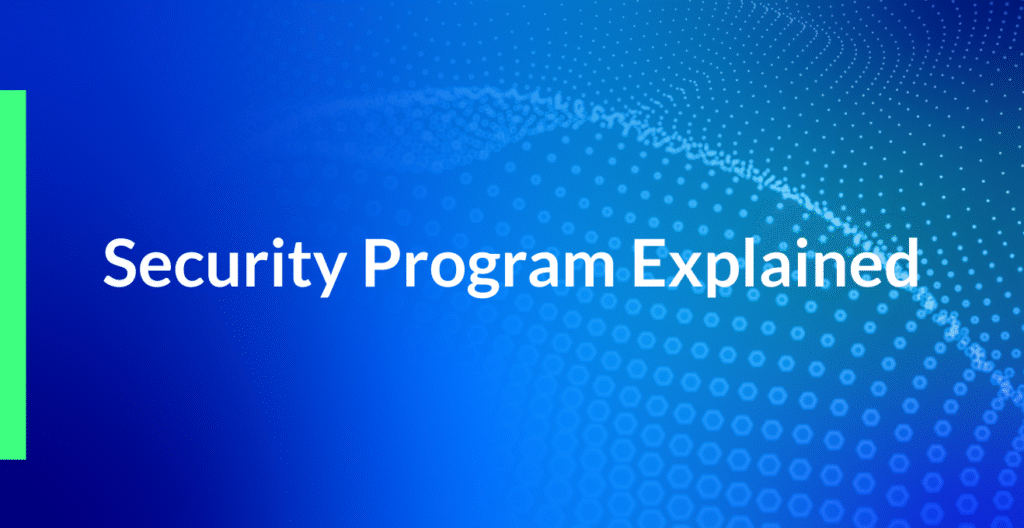
1.0 Purpose and Mandate This Security Program Aggregate (SPA) document establishes the formal, high-level governance framework for the organization’s security operations. It serves as the central charter, summarizing the policies and principles that are implemented through the comprehensive suite of fifty (50) individual Standard Operating Procedures (SOPs). The mandate of this program is to protect the confidentiality, integrity, and availability of all organizational information assets, ensure demonstrable compliance with legal and regulatory requirements, and foster a resilient, security-first culture.
2.0 Governance and Compliance Framework The entire security program is built upon a foundation of industry best practices and is designed to be fully compliant with key international standards and regulations.
- ISO/IEC 27001:2022: Our security program is architected as a formal Information Security Management System (ISMS) aligned with the ISO 27001:2022 standard. The fifty SOPs are the direct implementation of the necessary technical, organizational, physical, and people-focused controls outlined in Annex A. The program emphasizes a risk-based approach to security, continuous monitoring, and a commitment to continual improvement, fulfilling the core requirements of the standard.
- General Data Protection Regulation (GDPR): The program is designed to meet the stringent requirements of the GDPR. All procedures are built to ensure the security of processing personal data (Article 32) through state-of-the-art technical and organizational measures. The program’s emphasis on rapid detection, investigation, and reporting directly supports the mandatory 72-hour breach notification requirement (Article 33).
3.0 Operational Pillars of the Security Program The fifty SOPs are organized into six core operational pillars that define the functions and capabilities of the Security Operations Center (SOC) and its supporting teams.
3.1. Pillar 1: Command and Control This pillar governs the fundamental rhythm and command structure of the SOC, ensuring seamless 24/7 operation, clear communication, and effective reporting.
- Core SOPs: SOC Shift Handover, SOC Communication Protocols, Security Incident Escalation, Security Metrics and Reporting.
3.2. Pillar 2: Threat Detection and Analysis This pillar defines the mechanisms by which the SOC gains visibility into the environment and detects potential threats across all technology layers.
- Core SOPs: Incident Identification and Categorization, Log Management and Monitoring, SOC Dashboard Monitoring, Endpoint Detection and Response (EDR), Network Traffic Analysis, Firewall Monitoring and Management, Anomaly Detection, Physical Security Monitoring, Cloud Security Monitoring.
3.3. Pillar 3: Proactive Defense and Intelligence This pillar focuses on moving beyond reactive defense to proactively anticipate and hunt for threats, reduce the attack surface, and understand the adversary.
- Core SOPs: Threat Intelligence Integration, Threat Hunting, Threat Landscape Monitoring, Threat Actor Profiling, Vulnerability Management, Patch Management, Dark Web Monitoring, Deception Technology Management.
3.4. Pillar 4: Incident Response and Management This pillar codifies the structured, repeatable processes for responding to confirmed security incidents to minimize impact, eradicate the threat, and recover operations.
- Core SOPs: Incident Response, Phishing Incident Handling, Malware Analysis and Mitigation, Forensics and Evidence Handling, Chain of Custody Procedures, Root Cause Analysis.
3.5. Pillar 5: Governance, Risk, and Compliance (GRC) This pillar establishes the formal controls and processes for managing access, enforcing policy, and ensuring the security of the entire technology ecosystem, including third parties.
- Core SOPs: Access Control Monitoring, Privileged Access Management, Security Policy Enforcement, Third-Party Risk Management, Application Security Monitoring, Encryption and Key Management, Backup and Recovery Procedures, Disaster Recovery Plan, Compliance and Audit Support, Regulatory Compliance Monitoring.
3.6. Pillar 6: Continual Improvement and the Human Element This pillar recognizes that security is a continuous process of refinement and that a well-informed workforce is a critical security control.
- Core SOPs: Security Awareness Program, Training and Awareness, SIEM Tuning and Optimization, False Positive Management, Security Orchestration, Automation, and Response (SOAR), Zero Trust Security Implementation.
4.0 Program Enforcement and Review This SPA and its supporting SOPs are mandatory for all personnel. Adherence is monitored through the continuous compliance activities outlined in SOP-SOC-49 and verified through the internal and external audit processes defined in SOP-SOC-20. The entire program is subject to a formal management review at least annually to ensure its continued effectiveness, relevance, and alignment with the organization’s strategic objectives. This commitment to review and adaptation ensures the security program remains a dynamic and resilient defense against the evolving threat landscape.
****Connect with me in LinkedIn if you are interested to develop SOC SOP’s.